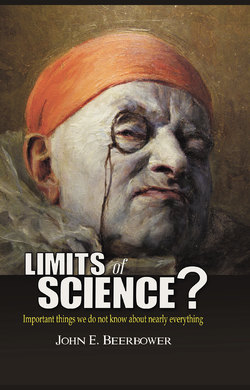Читать книгу Limits of Science? - John E. Beerbower - Страница 20
На сайте Литреса книга снята с продажи.
The nature of understanding
ОглавлениеAlternatively, one could say that these types of explanation are really just appeals to familiar phenomena, which do not really “explain” anything either; they just make the observed relationships seem familiar or normal to us so that we feel that there is no pressing need for further explanation. But, how satisfactory is that? Before being too critical, we should ask, what is a good explanation of a causal relationship? Do we not always face the question of what caused that which we have identified as a cause?
There is also the matter of the “physical mechanism” by which the phenomena is caused, calling again for an analogy to things familiar to us in ordinary life. See id., p.71 (Newton’s theory calls up the image of a force of attraction, like magnetism; Einstein’s theory of gravity pictures objects taking the shortest paths through a curved or warped space-time, in which, because of the curvature, the shortest path will be a curve rather than a straight line—yet, we have no identification of the mechanism by which the curvature is caused by the object with mass or, in fact, the mechanism causing the object to take the “shortest” route).22
Richard Feynman has claimed to paraphrase Newton’s reported response to the accusation that his theory did not really tell us anything as follows: “‘It tells you how it moves. That should be enough. I have told you how it moves, not why.’” The Character of Physical Law, p.31. Should it be enough?
I do not have a good or satisfying response. In part, there is a factual question of whether a particular theory is just an analogy or, in some way, actually reflects the mechanism by which the phenomenon occurs. If the latter, then I think it is fair to say that we have at least a first step closer to an explanatory theory than we would have simply with a mathematical formula. On the other hand, in much of current physics, especially with respect to the very small (quantum mechanics) and the very large (cosmology), many of the explanations offered are little more than mathematics. There seem to be obstacles, at least for now, to our ability even to conceive of or visualize the phenomena described by the mathematical theories. Often, the implications of the theories simply defy our common sense and sharply conflict with our perception of reality.
Nonetheless, the scientists seem to feel that the creation of an elegant mathematical model, at least one that is consistent with observed empirical phenomena and that is testable empirically, at least in theory (that is, one could imagine an empirical test of the theory or model even if current technology does not permit one to perform it), constitutes an explanation of the phenomena under investigation. In other words, these scientists appear to believe that mathematical representation constitutes understanding. However, as discussed below in our examination of mathematics, we do not have a very satisfactory theory of the relationship between mathematics and reality. In fact, the successes may be little more than coincidences that are not necessarily extendable to other areas.
